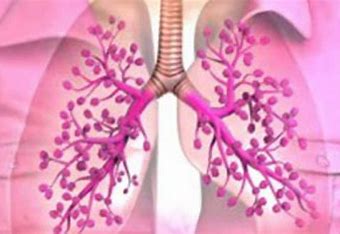The Surprising Connection Between Pelvic Floor Training and Healthy Lungs
When we think about pelvic floor training, we often associate it with core strength, bladder control, and even better intimate experiences. But did you know that pelvic floor training can also have a positive impact on your lungs and respiratory health? Yes, you read that right! The connection might not be immediately obvious, but it's there, and it's backed by science. Let's dive into this intriguing relationship between pelvic floor health and your lungs.
Understanding the Pelvic Floor: More Than Meets the Eye
Before we explore the connection, let's briefly understand what the pelvic floor is. The pelvic floor is a group of muscles that forms a hammock-like structure at the base of your pelvis. It plays a crucial role in supporting your pelvic organs, maintaining bladder and bowel control, and even contributing to sexual function.
The Diaphragm and Pelvic Floor: A Dynamic Duo
Now, here's where things get interesting. Your diaphragm, a dome-shaped muscle located at the base of your ribcage, is the primary muscle responsible for your breathing. As you inhale, your diaphragm contracts and moves downward, allowing your lungs to expand and fill with air. As you exhale, the diaphragm relaxes, and air is pushed out of your lungs.
What's the connection between the diaphragm and the pelvic floor, you ask? Well, it turns out that these two muscle groups are intimately connected. When you inhale, your diaphragm moves downward, causing a drop in pressure within your abdomen. This drop in pressure is countered by the pelvic floor muscles, which contract and provide stability to the pelvic organs. In other words, the pelvic floor acts as a supportive foundation for your diaphragm's movement during breathing.
Pelvic Floor Dysfunction and Breathing Issues
When your pelvic floor muscles are weak or dysfunctional, it can lead to a range of problems, including urinary incontinence, pelvic organ prolapse, and even difficulty during childbirth. But here's the interesting part: pelvic floor dysfunction can also impact your breathing patterns.
Weak pelvic floor muscles may fail to provide adequate support to the diaphragm during inhalation. This can result in inefficient breathing, shallow breaths, and even restricted lung expansion. Over time, these breathing patterns can contribute to respiratory issues such as reduced lung capacity, decreased oxygen exchange, and increased risk of conditions like asthma and chronic obstructive pulmonary disease (COPD).
The Benefits of Pelvic Floor Training for Your Lungs
The good news is that just as pelvic floor training can improve the strength and function of your pelvic floor muscles, it can also have a positive impact on your breathing and lung health. Engaging in regular pelvic floor exercises helps enhance the coordination between your diaphragm and pelvic floor muscles, promoting efficient breathing patterns.
Strong pelvic floor muscles provide better support for the diaphragm, allowing it to move freely and facilitate deep, full breaths. This enhanced breathing not only improves oxygen exchange but also reduces the strain on other accessory breathing muscles, making your respiratory system more effective.
Incorporating Pelvic Floor Training into Your Routine
If you're intrigued by the potential benefits of pelvic floor training for your lung health, it's time to incorporate it into your fitness routine. Exercises like pelvic floor contractions, deep breathing while engaging the pelvic floor, and diaphragmatic breathing techniques can all contribute to improved pelvic floor and respiratory function.
Remember, a holistic approach to health considers the interconnectedness of different muscle groups and systems in your body. By nurturing your pelvic floor health, you're not only taking care of your core strength and bladder control but also contributing to a healthier respiratory system.
Conclusion
It's fascinating to discover the hidden connections within our bodies that play a role in our overall well-being. The link between pelvic floor health and lung function is a testament to the complexity and synergy of our muscles and systems. So, the next time you engage in pelvic floor exercises, know that you're not only benefiting your core but also giving your lungs a helping hand in their essential task of keeping you oxygenated and energized.





